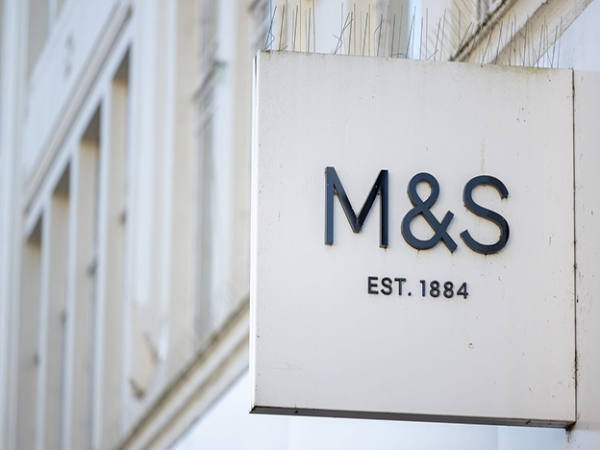While the latest data from the Office for National Statistics show we are not in recession, it is probably wise to say 'yet' or 'right now'. For an economy with a consumer bias, the dent in most pockets from rising food, energy and accommodation costs cannot long be without consequence. Any business sitting at the sharp end of consumer spending, those importing goods and businesses with high debt are going to feel the pinch more than most. Meanwhile, others are inherently more defensive – food retailing, energy production, exporters and dollar earners will be beneficiaries.
It is almost certainly too late to get ahead of the curve on picking stocks that will fly or fall in a recessionary environment – markets are typically pricing stocks and sectors at least nine months ahead of time – look at sector performance in the likes of general retail and house building. This can make some sectors appear cheap while in reality they are still value traps. However, it is still worth lifting the hood on a few key sectors that might have better or worse outcomes than markets have been pricing in and also to see if assumptions about classic defensive or ‘recession-proof’ characteristics still hold water.
Favourable prospects
Some sectors are driven by corporate or social necessity meaning that demand for products and services may be able to continue driving ahead even through economic headwinds.
Cyber security and digital migration – cyber attacks could be added to Mark Twain’s life certainties (death and taxes) and this remains the case, probably more so with Russia potentially aiming to attack more overseas assets. Add in the continuing shift in financial crime to the cloud and it is likely that spending in this area will stay strong. While further rises in interest rates have renewed the downwards pressure on tech-stock valuations, there does appear to be increasing stability. For cyber stocks one is still better off looking in the US listings at the likes of Crowdstrike (US:CRWD): the UK’s Darktrace (DARK) remains volatile but may attract another bidder.
Another strong trend is digital transformation/migration, the movement of paper records and local IT systems into the cloud. This is now a ‘must have’ for businesses and public bodies and does feel countercyclical and hardened against recession. Amazon (US:AMZN) is a key player and in the UK, investors should look at Kainos (KNOS).
Food retailers and consumer staples – Food spending is relatively defensive with households likely to focus mainly on outlet switching to lower spending rather than outright cutbacks. For investors, there is limited scope to play this trend: ASDA and Morrrisons are delisted while Aldi and Lidl are both privately owned. Ocado (OCDO) potentially loses ground (anecdotally I saw locally an ASDA home delivery truck where normally it would likely have been Ocado) as could Marks and Spencer (MKS) so perhaps the main investable migration target for food feels like Tesco (TSCO), although without especially great conviction. In clothing or furniture an entire shopping season can be pushed out and luxury items also can wait until the financial climate improves so other retailers are still best avoided.
Another area of more stable spending is in the so-called ‘consumer staples’, items aside from food where cutting back is traditionally a low priority – this encompasses the likes of cleaning products, personal hygiene and even alcohol & tobacco. In general consumer and household goods demand may shift to lower priced brands but with Unilever (ULVR) and Reckitt Benckiser (RKT) dominant manufacturers across many brands and price points, they are likely to retain business volumes. One might even consider the recently demerged from GSK Haleon (HLN).
Smokers find it hard to quit so Imperial Brands (IMB) or British American Tobacco (BATS) continue to trade well, with another advantage being the growth in less harmful smoking products (vaping for example) which could reignite growth and are already reducing the sector’s pariah status. In the drinks arena, while going out may decline, home consumption could grow (as during Covid) so overall demand for drinks should be fairly robust – Diageo (DGO) look good here (and is a major dollar earner) while Fevertree (FEVR) as a premium brand feels more vulnerable. Soft drinks are more easily cut from shopping lists so Britvic (BVIC) and Coca Cola HBG (CCH), which is facing issues as Russia was its largest market, may remain more subdued.
Defence – a sad indictment of modern life but spending on defence is rising as countries in western Europe respond to a potential return of the Cold War. Also many nations not honouring their NATO commitment to spend at least 2 per cent of GDP on defence are expected to step up. UK businesses with US Defense Department contracts could see higher demand thanks to the weak pound – BAe Systems (BAE) probably offers the best fit here.
Logistics – in a recession it is more likely that the value of spending on items rather than the volume will decline – take food as an example. Even if a shopper moves one or two notches down the value chain, the number of cereal boxes or packs of mince remains the same. This means more consistent volumes for the logistics businesses and the likely continued growth in online shopping is another boon for this sector. This is not a large sector if one ignores the troubled Royal Mail (now rebranded International Distributions Services) but mid cap Wincanton (WIN) could be a fairly steady performer.
Value traps
This is where a stock or sector has been very weak and appears cheap, but in reality the low rating is because the key valuation metric (eg earnings per share or net asset value) in consensus forecasts is too high.
Funeral services – historically one might well have been safe assuming that the funeral services sector would exhibit one of the steadiest demand profiles – ‘death and taxes’ again. The last two years have been strong because of Covid but that now looks like an unrepeatable spike and, like other areas of consumer spending, sums spent on a funeral are dropping. Dignity (DTY) reports that average spend is dropping sharply. Another issue in this sector has been the collapse or withdrawal of numerous pre-paid funeral plan operators that has tainted the industry and has measnt that the remaining larger players having to offer discounted, potentially below cost funerals for those that have lost money in the prepaid schemes.
Leisure and tourism – leisure spending is rightly viewed as being at the sharp end of discretionary spending with fewer cinema trips and less eating out likely to be among the first points of cost saving for many households. Sharp falls in the likes of Restaurant Group (RTN) and Wetherspoons (JDW) share prices do not automatically generate value. Holiday travel too is an area readily cut, cancelled or downgraded making life harder for travel groups such as TUI (TUI) or Carnival (CCL). Post Covid surges in holiday demand are likely quickly to fizzle out. However, that is only true for domestic travel and here the weak pound is a plus point and tourism numbers could easily rise if the pound remains at depressed levels; this may not be enough of a counter, however.
Real estate – the situation here is interesting – while the apparent concern might be empty premises and lowered rents, there is a larger problem – capitalisation yields. This is the yield used to determine the capital value of a property asset. The yields used in property valuation are not just an absolute value based on expected rental growth but also stand relative to the market's risk free return (RRF – typically taken to be the yield on 10-year Gilts), usually at a premium. The RRF is now >4 per cent and prime real estate yields had fallen to nearer 3 per cent – that would suggest that real estate was less risky than the RRF. That cannot be the case and property yields will rise, most likely above the RRF meaning that NAVs in the property sector will fall. The REIT sector has been weak on this basis (British Land (BLND) is down 40 per cent year-to-date for example) but it remains unclear how high property yields will go. Peel Hunt believes the market is pricing a 150 basis point increase but the RRF has increased by >330 basis points this year and is rising again. This sector feels like it has further to settle yet.
House builders – in a previous article we warned that the house builders were a value trap and in a follow up that investors should await the trigger of more realistic forecasts and management guidance, possibly profit warnings, before considering buying back into this sector. Even after falls to date of more than 50 per cent, this sector can still go lower when these events finally occur - that would be the time to begin investing again. This process may have already begun with profit warnings from Inland Homes (INL), Watkin Jones (WTK) and, albeit somewhat tangentially, building materials manufacturer Marshalls (MLSH): we may be getting close to the trigger point to buy here. In the long term demand for new housing is insatiable and governments appear unable to resist ‘making it easier’ for buyers of new over existing homes – while there may not be much government cash going spare at present, it feels somewhat inevitable that new housing will see fresh handouts at some point, which could turbocharge sector performance.
Therecould, however, be favourable, related plays here. Mortgage Advice Bureau (MAB1) – as securing a mortgage becomes harder, more potential buyers are likely to turn to specialist advisers. The buy-to-let (BTL) or professional rental market is also interesting – if fewer first time buyers (in particular) are able to secure a mortgage, more will have to rent which could be good for Paragon Banking Group (PAG).
Something tangential
Perhaps one could think more tangentially – corporate bonds. When bond yields fell to very low levels, the type of cautious investor looking for lower growth, lower risk and good income was forced out of fixed interest and into riskier equity investments. Investors looking for a return in the low-to-mid-single-digit percentage range can now find that even in the risk-free (ie sovereign) end of the bond market with higher returns in the better regarded end of the corporate bond market. Take something like the Tesco 4.875% 2042 bond. This is trading below par at around 78p per 100p, has a BBB rating from credit agency Fitch (BBB = “good prospects for ongoing viability”) which means the market expects future coupons to be paid and for a successful redemption at par, on maturity in 20 years. The current ‘running yield’ is 6.2 per cent and the Gross Redemption Yield (GRY), which accounts for income payments and the gap between today’s price and the final redemption (a gain in this case), is 7.7 per cent.
Historically such a high yield might scream high risk but today the gap between this GRY and the comparable Gilt yield is not high compared even with very recent levels – a year ago this bond’s GRY was around 3.75 per cent, giving the same premium over the RRF, give or take, as today. Bonds face a risk from inflation (the future redemption price is fixed) and potentially further rises in the RRF may push the bond price lower in the near term but for a high quality issuer, and especially if held right through to redemption in 20 years, this could be attractive to lower-risk investors.










